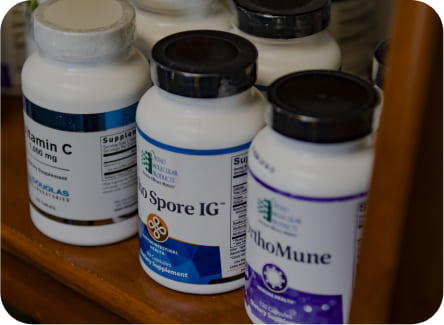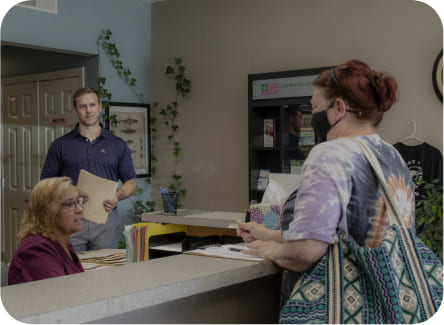
Managing Copd with Spiriva: Tips and Strategies.
Embrace Pulmonary Rehabilitation for Improved Lung Function
Embarking on a pulmonary rehabilitation program can be a game-changer for those living with COPD. These comprehensive programs, designed by healthcare professionals, combine exercise training, education, and support to enhance lung function and overall well-being. Tailored exercises strengthen respiratory muscles, while education equips individuals with vital strategies for managing symptoms and preventing exacerbations.
Beyond physical benefits, pulmonary rehabilitation fosters a sense of community, enabling participants to connect with others navigating similar journeys. This shared experience cultivates a supportive environment, empowering individuals to take an active role in their care. By embracing this invaluable opportunity, individuals can unlock the potential for improved quality of life and greater independence.
Studies have consistently demonstrated the profound impact of pulmonary rehabilitation on COPD management. Participants often report reduced breathlessness, increased exercise tolerance, and a heightened sense of control over their condition. These outcomes not only enhance physical capabilities but also contribute to a renewed sense of confidence and overall emotional well-being.
Embracing pulmonary rehabilitation is a proactive step toward reclaiming control and optimizing lung function. Under the guidance of healthcare professionals, individuals can acquire the tools and knowledge necessary to navigate the challenges of COPD with resilience and determination.
| Benefits of Pulmonary Rehabilitation |
Potential Outcomes |
| Exercise Training |
Improved lung function, increased exercise tolerance |
| Education |
Enhanced symptom management, prevention of exacerbations |
| Support Network |
Shared experiences, emotional well-being |
Identify and Avoid Copd Triggers Proactively

For individuals living with COPD, proactively identifying and avoiding triggers is paramount. Airborne irritants like cigarette smoke, dust, and pollutants can exacerbate symptoms, making it crucial to maintain a clean indoor environment. Additionally, seasonal changes and respiratory infections may worsen COPD flare-ups, necessitating vigilant monitoring and prompt action.
Spiriva, a bronchodilator medication, can help manage COPD symptoms when used in conjunction with a comprehensive trigger avoidance strategy. By recognizing and mitigating exposure to personal triggers, patients can reduce the frequency and severity of COPD exacerbations, improving their overall quality of life.
Consulting with healthcare professionals and keeping a detailed symptom diary can aid in pinpointing specific triggers. Armed with this knowledge, individuals can make informed lifestyle adjustments, such as avoiding certain environments or activities, to proactively manage their COPD effectively.
Incorporate Exercise Routine for Better Breathing
Regular exercise can bring significant benefits for individuals with COPD, particularly when combined with proper medication like Spiriva. Light to moderate activities, such as walking or stationary cycling, can improve cardiovascular fitness and strengthen breathing muscles, making it easier to manage respiratory symptoms.
Consistency is key when incorporating an exercise routine. Start slowly, gradually increasing duration and intensity under professional guidance. Maintaining a regular schedule not only enhances lung capacity but also boosts overall energy levels and promotes better sleep quality.
Engaging in supervised pulmonary rehabilitation programs can provide structured exercise plans tailored to individual needs. These programs also offer valuable education on breathing techniques and self-management strategies, empowering patients to take an active role in their care.
Optimize Medication Timing for Maximum Benefits

Adhering to the prescribed medication schedule is crucial for optimizing the benefits of Spiriva, a long-acting bronchodilator used in COPD management. It's recommended to take Spiriva at the same time each day, as consistent timing helps maintain a steady level of the medication in the body. Missing doses or taking them erratically can diminish the drug's effectiveness and increase symptom flare-ups.
Consult with a healthcare provider to determine the ideal timing for taking Spiriva, as it may vary depending on individual circumstances and potential interactions with other medications. Keeping a medication log or setting reminders can aid in establishing a routine and ensuring timely administration for maximum therapeutic impact.
Adopt Breathing Techniques for Easing Symptoms
Mastering breathing techniques can be a game-changer in managing COPD symptoms. Pursed lip breathing, where you inhale through your nose and exhale through pursed lips, helps control shortness of breath. Diaphragmatic breathing, involving deep breaths through the nose while engaging the diaphragm, promotes better oxygen exchange. Combining these techniques with medications like Spiriva can significantly alleviate breathlessness and improve overall lung function.
| Technique |
Description |
Benefits |
| Pursed Lip Breathing |
Inhale through the nose, exhale through pursed lips |
Controls shortness of breath |
| Diaphragmatic Breathing |
Deep breaths through the nose, engaging the diaphragm |
Promotes better oxygen exchange |
Monitor Progress and Adjust Treatment Accordingly
Regularly tracking your symptoms, lung function tests, and overall well-being is crucial for managing COPD effectively. By closely monitoring these factors, you can identify patterns, recognize potential flare-ups, and make informed decisions about your treatment plan. Collaborate with your healthcare team to assess the effectiveness of your current regimen and explore adjustments if needed. This proactive approach empowers you to stay ahead of the disease progression and maintain the best possible quality of life.
Additionally, staying vigilant for any changes in your condition allows for timely interventions. Don't hesitate to communicate openly with your healthcare provider about any concerns or difficulties you may be experiencing. Together, you can fine-tune your treatment strategy, whether it involves modifying medication dosages, incorporating supplemental oxygen therapy, or exploring alternative therapies. Embracing a flexible and adaptive mindset ensures that your COPD management remains tailored to your evolving needs.




